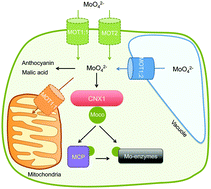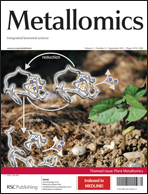Molybdenum metabolism in plants
Abstract
The viability of plants relies on molybdenum, which after binding to the organic moiety of molybdopterin forms the molybdenum cofactor (Moco) and acquires remarkable redox properties. Moco is in the active site of critical molybdoenzymes, which use to work as small electron transport chains and participate in N and S metabolism, hormone biosynthesis, toxic compound transformations and other important processes not only in plants but also in all the other kingdoms of life. Molybdate metabolism in plants is reviewed here, with special attention to two main aspects, the different molybdate transporters that with a very high affinity participate in molybdenum acquisition and the recently discovered Moco enzyme amidoxime-reducing component. Their functionality is starting to be understood.

- This article is part of the themed collection: Plant Metallomics

 Please wait while we load your content...
Please wait while we load your content...